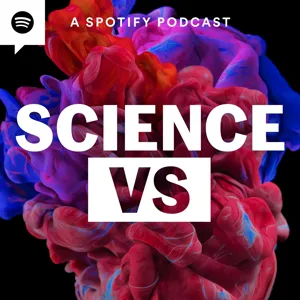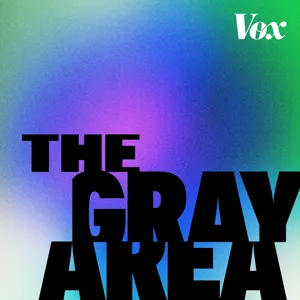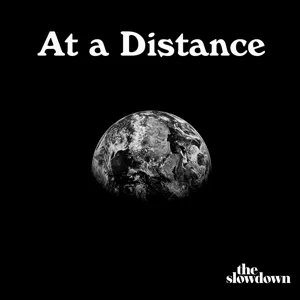Podcast Summary
New Coronavirus: Over 90,000 Cases, 3,000 Deaths Worldwide: The new coronavirus has spread to over 70 countries, causing over 90,000 cases and 3,000 deaths. Experts warn the fatality rate is higher than the flu, emphasizing the importance of taking it seriously.
The new coronavirus is spreading rapidly around the world, with over 90,000 cases and more than 3,000 deaths as of now. The virus has affected over 70 countries, including the US, where there are at least 100 confirmed cases and several deaths. Despite the increasing number of cases and the resulting panic, President Trump is urging calm, stating that the risk to Americans remains low. However, experts like Cecile Vibaut, an infectious disease epidemiologist at the National Institutes of Health, warn that the fatality rate of the virus is currently estimated to be 3.4%, which is higher than that of the seasonal flu. Cecile, who has experience tracking other outbreaks like Zika, Ebola, and SARS, emphasizes the importance of taking the virus seriously and preparing for its potential impact. The situation is evolving rapidly, and it's crucial to stay informed and follow guidelines from health organizations and local authorities.
COVID-19 fatality rate varies greatly between countries: Older adults and those with pre-existing conditions are most at risk, but most people will experience mild symptoms. More data is needed to determine the true global fatality rate.
The fatality rate of COVID-19 varies greatly between countries due to differences in surveillance and testing. Countries with more extensive testing and surveillance, like China, have reported lower fatality rates, while those with limited testing, like Iran, have reported higher ones. The current estimate for the global fatality rate is around 0.7-2%, but this may change as more data becomes available, particularly from people with mild or no symptoms. Older adults and those with pre-existing health conditions are at the highest risk of death from COVID-19, but being male may also be a risk factor for severe disease. Most people who contract the virus will experience mild symptoms, such as coughing, sneezing, and fever, but a significant number may be undetected due to lack of testing. Research suggests that the number of mild cases may be much higher than currently reported, which could lead to a significant decrease in the reported fatality rate.
A healthy 20-year-old woman spread the virus without symptoms: Experts estimate up to 70% of adults could be infected due to the virus's ability to spread before symptoms appear
The coronavirus can be spread by people who don't show symptoms, making it more difficult to control. A healthy 20-year-old woman in China tested positive for the virus but didn't develop symptoms despite being in close contact with infected family members. This is concerning as it suggests that people could unknowingly spread the virus. The virus has already spread to multiple countries, and experts predict that up to 70% of the world's adult population could be infected. Harvard epidemiologist Mark Lipsitch, who came up with this estimate, bases his predictions on the virus's reproduction number. The virus is more challenging to contain due to its ability to spread before people realize they're sick. The unknowns surrounding the virus are significant, but one thing is clear: it's more contagious than initially thought.
Mark's model suggests up to 70% of adults could get infected: Mark's estimate of 40-70% infection rate is a worst-case scenario, subject to change as new data emerges, and includes those with no symptoms
Mark's model, based on the coronavirus's reproduction number and historical data from other pandemics, suggests that 40 to 70 percent of adults around the world could get infected with the virus. However, it's important to note that this estimate includes those who may not exhibit symptoms or may have no symptoms at all. Additionally, the reproduction number, which is used to make this calculation, is constantly changing as new data becomes available. Experts agree that Mark's estimate is more of a worst-case scenario and that the actual number could be lower due to control measures being implemented by governments and organizations. Ultimately, while the numbers may be concerning, it's crucial to remember that estimates and models are just that – estimates and models – and that the situation is constantly evolving.
Impact of Coronavirus on Daily Life: A Wuhan Engineer's Perspective: A Wuhan engineer shares her experience of staying at home, limiting social interactions, and following guidelines to prevent the spread of coronavirus, emphasizing the potential disruptions to daily life and the importance of precautions.
The coronavirus situation in the US could lead to severe disruptions to everyday life, including being told to stay at home and avoid public places. This was highlighted in an interview with Chan, an electrical engineer living in Wuhan, who has been in quarantine since January. She shared how she works from home, does online shopping, and goes outside carefully while keeping distance from others. Chan has had minimal face-to-face contact with people in the last month, limiting her interactions to her parents and those getting her groceries. The interview underscores the potential impact of the virus on social interactions and daily routines, and the importance of following guidelines to prevent its spread. Experts have warned that hospitals becoming overwhelmed with sick patients could make the situation even more severe. Overall, it's crucial to take necessary precautions to protect oneself and others from the virus, and be prepared for potential disruptions to daily life.
Coping with the pandemic: hobbies, front lines, and scientific progress: Amidst pandemic challenges, people hobby, fight virus, and seek scientific solutions. Scientific community explores Thalidomide, antimalarial drugs, but stay cautious and open-minded. High infection rates, no publicly available vaccine yet, but ongoing trials and dedication offer hope.
Despite the challenges and uncertainties brought about by the ongoing pandemic, people continue to find ways to cope and contribute. Some focus on their hobbies, while others work on the front lines to fight the virus. The scientific community is also making progress in finding potential treatments, with some unexpected contenders like Thalidomide and antimalarial drugs showing promise. However, it's important to remain cautious and open-minded, as the virus is new and the scientific response is ongoing. The situation is concerning, with infection rates still high and a publicly available vaccine still at least a year away. But with ongoing clinical trials and the dedication of researchers and healthcare workers, there is hope for progress. Overall, it's a time for staying informed, staying prepared, and staying resilient.
Preparing for the potential spread of COVID-19 and effective ways to prevent infection: Stay informed, stay calm, wash hands thoroughly and often, dry hands completely, focus on practical steps to protect yourself and others, and remember the CDC's recommendations.
It's important to prepare for the potential spread of the virus by having some essential supplies at home, especially if you have chronic illnesses or are older. Washing hands properly for at least 20 seconds is an effective way to prevent infection. While wearing masks may help infected individuals prevent spreading the virus, it's less clear if they help healthy individuals. The situation can be scary, but it's important not to panic. Instead, focus on taking practical steps to protect yourself and others. The CDC recommends washing hands thoroughly and often, and our team has even created a song to help you remember the proper hand-washing technique. Remember, the battle isn't won when you rinse your hands, be sure to dry them thoroughly to reduce the transfer of germs. Stay informed, stay calm, and stay healthy.





